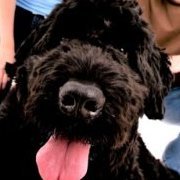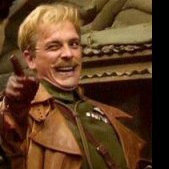Search the Community
Showing results for tags 'HORNBY'.
-
My second entry will be this Scooby-do. It was actually developed and built in the UK by Prodrive, but has clearly got Japanese DNA, so is hopefully OK for the GB Cheers
- 17 replies
-
- 11
-

-
I picked up a Hornby Battery train set from the car boot sale today. Twenty quid sounded good at the time. Large blue diesel, five wagons, rails and a controller. It's decades since I've done railway stuff! This is for the Grandkids. Honest guv. Got it home, to find that the controller has no insides! I have another on order from the bay. My question is, what voltage does this engine work to? Can it be run as is, on ordinary mains type HO rail?
-
And now for something completely different (as someone once said). Having ditched my proposed Cirrus Moth build, I've decided to build this instead. Sliding the tray out from the box, reveals some nicely packaged bits and also the painting paraphernalia promised by the "Starter Kit" flash. Under the tray, there's also a tube of cement. The decals are for the Alister McRae/David Senior car from the 2002 Monte Carlo Rally (in which they finished 14th). The kit itself is pretty basic - it's little more than a Scalextrix body shell and a set of wheels Having said that, I've previously built the companion Focus WRC kit and found it to be a delight. Everything was crisply moulded and fitted together beautifully. One of the highlights was the decals, which were superb. Unfortunately, my Focus kit came from a London Science Museum boxing, which had a unique decal sheet. In contrast, this Hornby version has the standard decals, which look worryingly thick and glossy. Fingers crossed they work OK. Cheers
-
Hola comrades, not sure if anyone here might know the answer to this but I have seriously been considering pursuing a career of some sort in the hobby industry and I came across this page on Airfix's website. Would anyone here happen to already be employed by Airfix or another kit manufacturer and know what sorts of jobs they interview or hire for? If anyone can answer I would greatly appreciate it. Muchas gracias. https://uk.hornby.com/careers
-
I started this 1/32 Hornby kit earlier in the year as part of the Africa GB. Unfortunately I subsequently had to withdraw it, when I realised that I couldn't pull together the necessary Safari Rally decals (here's a link to my build thread). Currently the car looks like this, with just the body shell needing to be painted and decalled. I'll be using the kit's Swedish Rally decals and will be making a start just as soon as my French Fancy and High Wing builds are finished. Cheers
-
Hi folk's, my eldest bought me a Hornby set for my birthday nice size to make a small layout,included was an oval with their pack A extension and their midi trackmatt.Now I'd like to build it around the trackmatt so need BC and D to do this.the question is if I eventually ran two train's would I need two transformer's? I also noticed that buying the individual pieces in the revevent pack's was a fair bit cheaper.My LMS is a Hornby stockist and as with my modelling Ilike to keep it local also wondered if you can recommend some other retailer's with good service and prices,Hatton's have some great offer's and the set came from Jadlam. Cheer's Steve.
-
Hi all this is my first railway related post. I have just gloss varnished one of my Hornby A4's 4903 Peregrine in the gorgeous LNER blue livery. She might be a railroad loco but she looks the business. I have swapped out the motion set for finer super detail versions and Glossed her up so she looks to me more "real" like shes made out of metal. I am very happy with how she now looks and thought I would share her with you. I hope you like her. Here she is outside curing off in the afternoon sun. Cheers Rob So there she is thanks for looking. Rob





